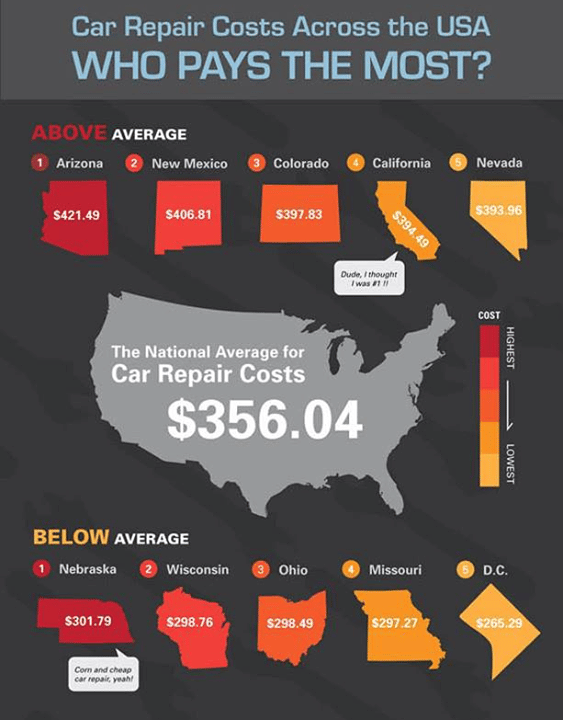Understanding The Relevance Of Your Car'S Warning Signals: What They Really Represent
Understanding The Relevance Of Your Car'S Warning Signals: What They Really Represent
Blog Article
Write- https://brake-check94050.win-blog.com/12487408/exactly-how-to-select-the-right-automobile-detailing-solution-for-your-needs Created By-Boye Alvarado
When you're behind the wheel, those beautiful caution lights on your control panel can be a little bit complicated. Do you understand what they're attempting to inform you concerning your car's health and wellness? Comprehending the relevance of these lights is essential for your safety and the longevity of your vehicle. So, the following time one of those lights turns up, would not you wish to decipher its message accurately and take the needed steps to resolve it?
Common Caution Lights and Interpretations
Identify typical warning lights in your car and understand their meanings to ensure risk-free driving.
https://dantehdxrl.blogdeazar.com/32245411/just-how-can-mobile-auto-detailing-change-your-lorry-treatment-experience-while-making-sure-top-quality-discover-the-key-factors-to-think-about-before-picking-a-detailer of the most typical caution lights include the check engine light, which signifies concerns with the engine or discharges system. If https://www.ratchetandwrench.com/articles/12494-accelerate-your-auto-repair-shops-growth-with-autoleap comes on, it's critical to have your car checked without delay.
The oil pressure advising light indicates low oil stress, requiring immediate attention to avoid engine damage.
A flashing battery light may recommend a faulty charging system, possibly leaving you stranded if not addressed.
The tire pressure surveillance system (TPMS) light notifies you to low tire pressure, impacting lorry security and fuel effectiveness. Overlooking this can lead to harmful driving problems.
The abdominal muscle light suggests an issue with the anti-lock stopping system, compromising your capability to quit promptly in emergency situations.
Finally, the coolant temperature level advising light warns of engine getting too hot, which can cause extreme damages if not settled quickly.
Understanding these common caution lights will certainly aid you address issues without delay and keep secure driving conditions.
Relevance of Prompt Attention
Understanding the typical warning lights in your vehicle is just the primary step; the value of without delay addressing these cautions can't be highlighted sufficient to ensure your security on the road.
When a caution light illuminates on your control panel, it's your auto's means of communicating a potential concern that needs attention. Ignoring these warnings can lead to much more extreme issues down the road, jeopardizing your security and potentially costing you more out of commission.
Prompt focus to cautioning lights can protect against breakdowns and mishaps. For instance, a flashing check engine light could show a misfire that, if left neglected, can create damage to the catalytic converter. Addressing this without delay can conserve you from an expensive repair service.
In a similar way, a brake system cautioning light might indicate reduced brake liquid or worn brake pads, essential parts for your security when driving.
DIY Troubleshooting Tips
If you observe a warning light on your dashboard, there are a few DIY troubleshooting ideas you can attempt before seeking professional help.
The first step is to consult your auto's manual to understand what the details caution light shows. Sometimes the issue can be as simple as a loosened gas cap triggering the check engine light. Tightening the gas cap may fix the problem.
One more usual problem is a reduced battery, which can cause numerous advising lights. Inspecting the battery links for corrosion and ensuring they're safe and secure could take care of the issue.
If a caution light lingers, you can attempt resetting it by detaching the auto's battery for a few mins and after that reconnecting it. In addition, checking your automobile's liquid levels, such as oil, coolant, and brake fluid, can aid troubleshoot advising lights associated with these systems.
Final thought
In conclusion, understanding your auto's caution lights is essential for keeping your car running efficiently and securely. By promptly dealing with https://ecu-tuning-software-free39406.blogproducer.com/38901413/just-how-to-pick-the-right-cars-and-truck-outlining-service-for-your-demands and understanding what they indicate, you can avoid costly repair services and possible breakdowns.
Bear in mind to consult your vehicle's handbook for certain details on each cautioning light and take action accordingly to ensure a trouble-free driving experience.
Remain notified, stay safe on the road!
